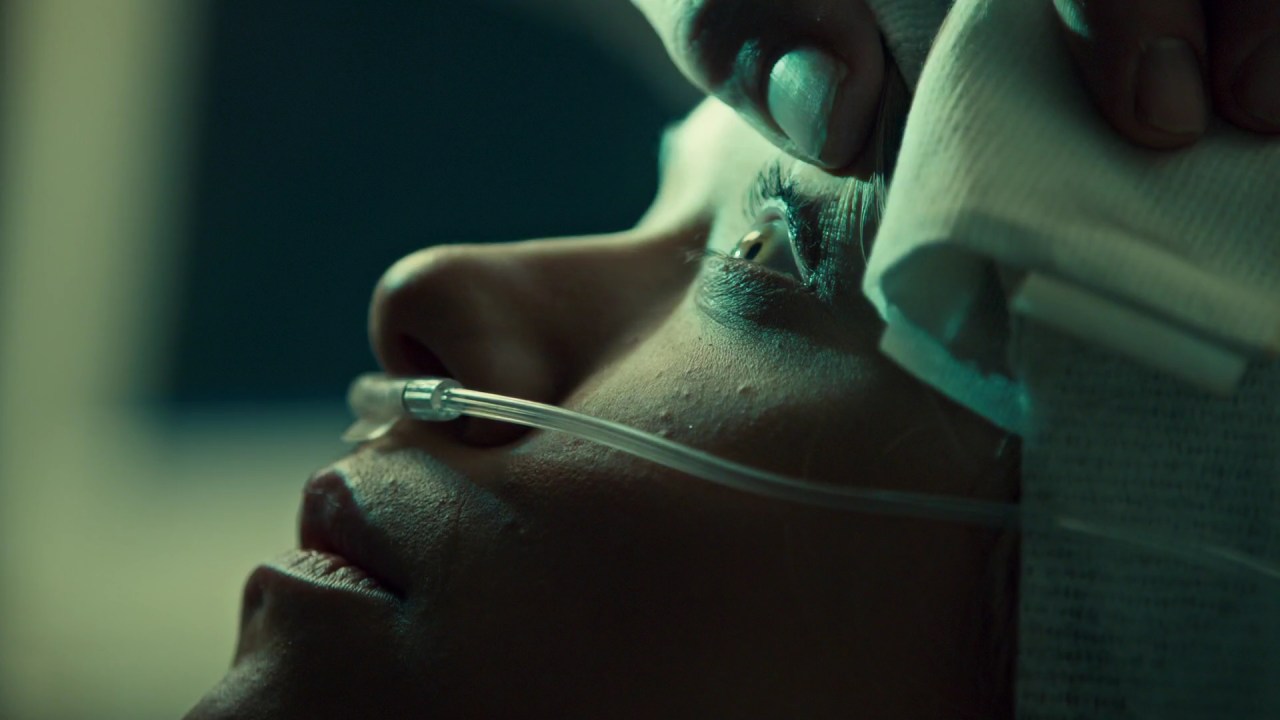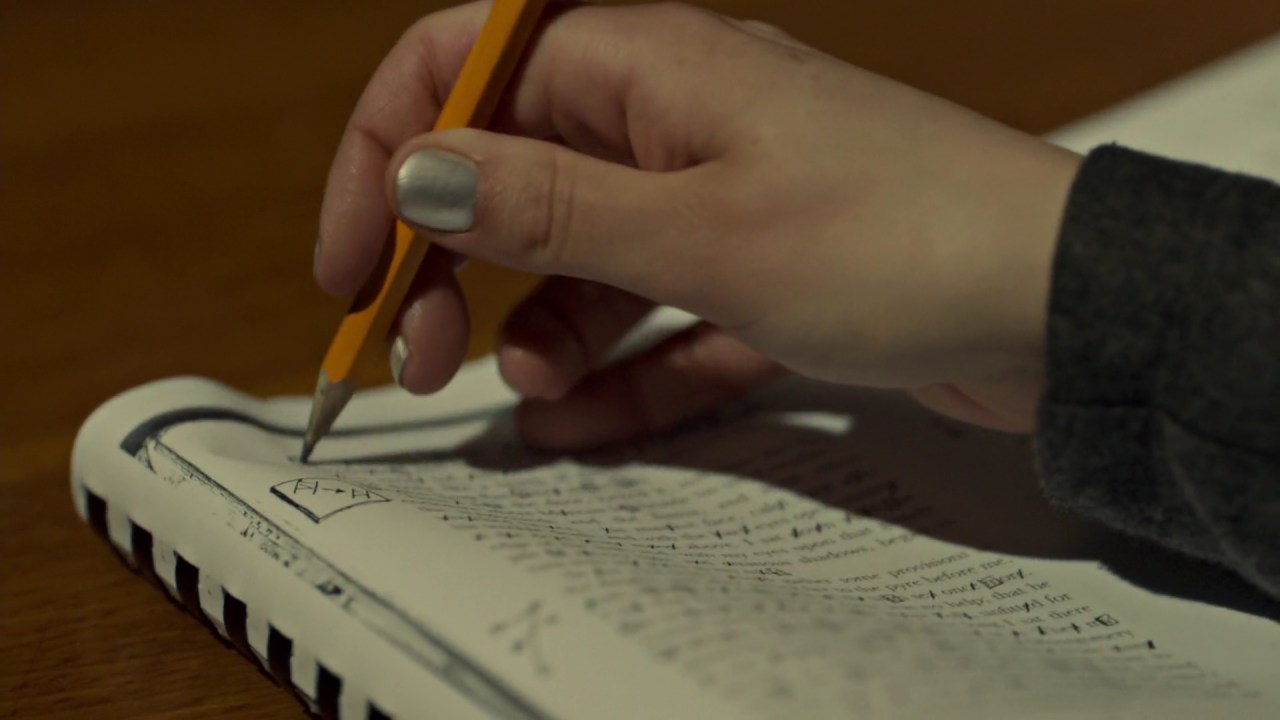Welcome to our Orphan Black science recaps, where Casey, a graduate student in genetics and developmental biology, and Nina, a professional science communicator, examine the science in each episode of OB and talk you through it in (mostly) easy-to-digest terms. Check out our regular OB recap for this episode here.
If you haven’t watched the latest episode of Orphan Black, be forewarned: there will be spoilers. There will also be crazy science.
Nina: We’re trying a different format for this week’s science recap. There wasn’t any one topic that we felt could carry a whole article to itself, so Casey and I are going to serve up some bite-sized science snippets from this episode. A science grab bag, if you will.
Sarah and Cosima’s Science Time
Casey: Sarah and Cosima had a lovely science chat in the episode, in which Cosima explained that Sarah lacks the protein that the prion acts on, which is why she is not infertile and why she didn’t have any lasting effects from Rudy’s blood. A prion is simply a protein that acts upon other proteins, causing them to misfold and malfunction or build up in the tissue. So in the case of the clone disease in the Leda clones, as well as the sexual partners of the Castor clones, the prion acts upon a protein in the reproductive system that leads to atrophy of the ovaries and sterilization.
Cosima also explains that the cure is not as simple as using Sarah’s stem cells for a transplant. This is because, although Sarah doesn’t have the protein the prion acts on in her genome, she does still make the prion because that is also part of the clone genome. So inputting her cells into Cosima’s body will not have much effect, because Cosima still makes the protein that the prion acts on.
Rachel’s eye

Protect Krystal 2k4ever
Nina: I would love to see Rachel sporting an eyepatch forever (I’m sure I’m not the only one), but it looks like that particular accessory is being retired. At first it appeared as Dr. Nealon was planning on harvesting Krystal’s healthy eye to replace Rachel’s destroyed one, perfectly matched. That’s actually pretty unlikely: first of all, Dr. Nealon specifies that Rachel will be receiving a “perfectly matched prosthetic eye”; secondly, whole eye transplants aren’t a thing yet. Parts of the eye can be transplanted, namely the cornea (the transparent structure at the front of your eye that focuses most of the light entering your eye—the lens inside is mostly for fine-focusing) because the cornea has no blood vessels (you wouldn’t want it to, if you want to be able to see through it) and so it can be easily cut away and plopped onto a different eye . The sclera (the white part of your eye) can also be transplanted, although this is less common. As for the whole eye, it’s just too complicated a structure: retinal cells die quickly after the eye is harvested, you’d have to reconnect so many muscles to get it to move properly, and it’s currently too difficult to get the optic nerve reconnected and communicating properly with the brain (although researchers are working toward a nerve regeneration solution for that last issue).
Rachel’s eye will likely be prosthetic and nonfunctional. The question now is, are they actually going to harvest Krystal’s eye to pass her off as Rachel? Are they using Krystal’s eye to model Rachel’s prosthesis?
Polish Clone: Identity Redacted
Casey: We discovered in 3×08 that there was a Leda clone living in Poland who unfortunately has died. Delphine explains that there are many synthetic sequences in the clone genome, and they do not know how these sequences interact, which is why the clone genome remains such a mystery. These synthetic sequences are novel, so they do not exist anywhere aside from the clones, and so it is very hard for the scientists to study the interactions of these proteins without the help of Ethan’s notes, which most likely are encrypted inside his book.

“In Londontown we all fell down…”
Ethan’s book has the potential to reveal the mysteries of the clone genome, as well as present a sequence that could be used as a form of gene therapy, or some other form of a cure for the clone disease. Even if the book talks primarily of Castor – which is possible due to the riddle Rachel decoded – this could still help the Leda clones because the prion that attacks the Castor brain is the same as the prion that attacks the Leda uterus, ovaries, and lungs.
Helena’s “babies”
Nina: This is a question that comes up a lot: we can see that Helena clearly still has her canister of fertilized eggs—but quite a bit of time has passed since Helena torched the Prolethean farm and ran off with them. Are they still viable?
The eggs are being stored in a liquid nitrogen Dewar. Even the best-sealed Dewars lose liquid nitrogen to evaporation (usually between 0.10 – 0.30 liters per day). How long a Dewar can keep a sample depends on the volume of the Dewar, its rate of loss, and how full of liquid nitrogen it is in the first place. Helena’s Dewar isn’t very big, and it was already used for procedures, so quite a bit has already been lost (also, from personal experience: when you’re filling a Dewar with liquid nitrogen, it’s difficult to tell just how much you have filled it). A full, sealed Dewar may advertise a static holding time of 14 weeks or more, but in Helena’s case, I’d hazard a guess that it could handle a few weeks tops.
Casey Griffin is a graduate student in genetics and developmental biology. She dissects mouse hearts, does lots of PCRs, and nerds (and cries and screams) about Orphan Black. You can check out her OB Science Time Tumblr posts here.
Nina Nesseth is a professional science communicator, emerging playwright, and serial tea-drinker. She’s happiest when science-ing at people (yes, that’s “science” as a verb) and watches way too many movies (but she lacks stamina and falls asleep if she tries to watch two in a row). You can find her on Twitter @cestmabiologie.
—Please make note of The Mary Sue’s general comment policy.—
Do you follow The Mary Sue on Twitter, Facebook, Tumblr, Pinterest, & Google +?









Published: Jun 12, 2015 01:57 pm